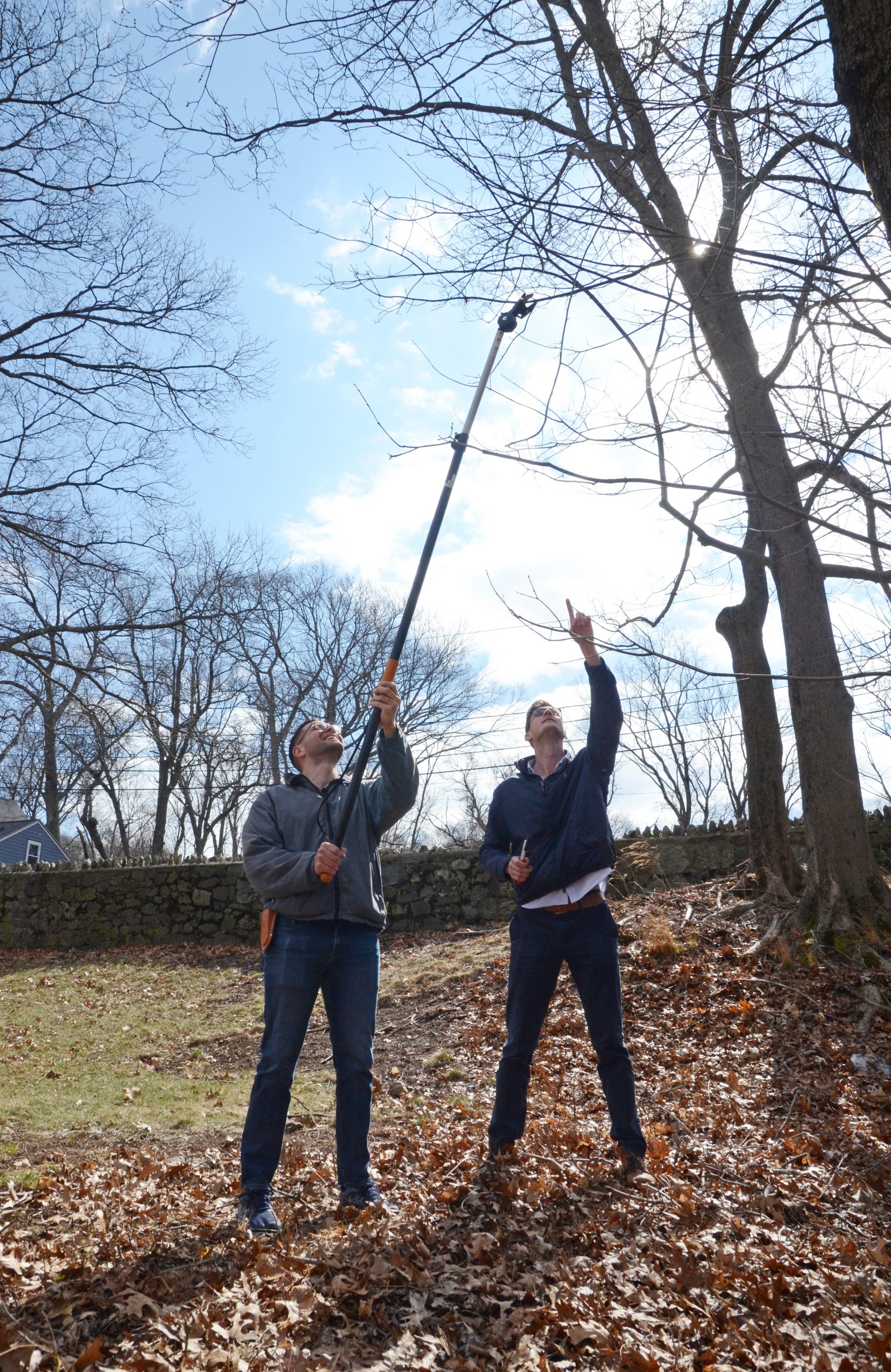The Katharine H. Putnam Fellowships in Plant Science and the Global Change Postdoctoral Fellowship are independent postdoctoral fellowships at the Arnold Arboretum that give scholars the opportunity to define and develop independent research projects while inspiring collaborations for years to come. In addition to the fellowships, the Arboretum also offers eight research awards to fund research projects for all career stages, from student to faculty, and the DaRin Butz Research Internship for an undergraduate summer research experience.
Current Fellows

Michael LaScaleia
2024 Putnam Fellow
Michael LaScaleia is an invasion ecologist investigating the physical and chemical defenses that allow invasive plants to avoid damage from herbivores. His dissertation at the University of Connecticut focused on the differential densities of insect herbivores feeding on native and exotic plant species and how feeding on exotic plants may make those insects more vulnerable to predation. Michael works in temperate New England forests, and hopes his research will unlock new methods to combat invasive plant species in this system.
Past Fellows

Megan Wilcots
2023 Global Change Fellow
Megan Wilcots received her PhD in Ecology from the University of Minnesota – Twin Cities and her BA in Environmental Biology with a focus on Ecology and Evolution from Columbia University. Her research experience has spanned from the tropics to the poles, with a focus on how global change affects carbon uptake of ecosystems. Her dissertation research focused on how nitrogen deposition affects plant community composition and ecosystem carbon storage in Minnesota grasslands. She also works in the Arctic, understanding how nutrient release from permafrost thaw may restructure Arctic ecosystems.
Megan is the first Global Change Postdoctoral Fellow from the Arnold Arboretum, a position she holds jointly with the Harvard University Center for the Environment (HUCE) as an Environmental Fellow. As a Fellow, Megan works with Professor Ben Taylor to study how Arctic heatwaves alter nitrogen fixation and carbon uptake. Megan is now an Applied Climate Scientist for The Nature Conservancy and a Visiting Scholar of the Arnold Arboretum.
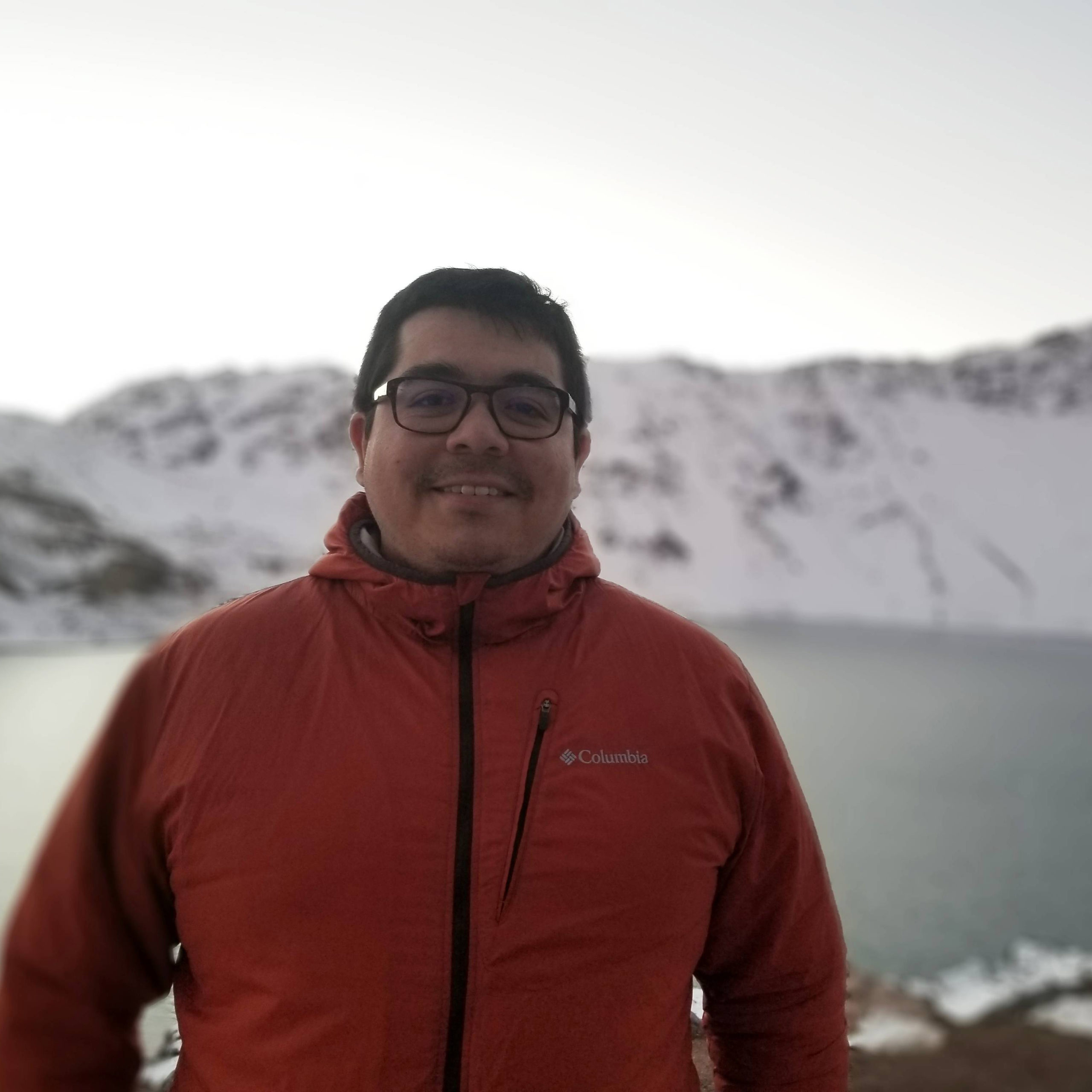
Camilo Villouta
2021-2023 Putnam Fellow
Winter presents significant challenges to long lived perennial species, and in particular, to the reproductive buds that form before winter. Trees have developed different strategies for surviving winter and ensuring reproductive success. Camilo Villouta focuses on understanding the tradeoff between different survival strategies that trees employ with successful reproduction in the spring. This work will add insight to how climate change may impact temperate woody species. Camilo is an assistant professor at the University of Rhode Island.

Morgan Moeglein
2021-2022 Putnam Fellow
Overwintering of leaf buds is a common strategy thought to allow plants to adapt to periodically stressful environments. Morgan Moeglein developed a comparative framework for understanding fundamental questions of the timing and mechanisms of leaf preformation in buds, its contribution to seasonal growth, and the conservation of these strategies using closely related species in the Arboretum’s living collections. Morgan is an assistant professor at Norwich University and a Visiting Scholar of the Arnold Arboretum.

Al Kovaleski
2019-2021 Putnam Fellow
Al Kovaleski is a plant physiologist interested in understanding how woody plants adapt to freezing stresses during winter. Al examined cold hardiness, chilling response, and resumption of growth to recalibrate phenological models of budbreak in diverse tree species in the Arboretum. Al is an assistant professor at the University of Wisconsin, Madison.
- Kovaleski AP*. 2022. Woody species do not differ in dormancy progression: Differences in time to budbreak due to forcing and cold hardiness. Proceedings of the National Academy of Sciences 119: e2112250119. Abstract
- Kovaleski AP*, Grossman JJ*. 2021. Standardization of electrolyte leakage data and a novel liquid nitrogen control improve measurements of cold hardiness in woody tissue. Plant Methods 17: 53. (APK and JJG contributed equally) Abstract

Jake Grossman
2018-2020 Putnam Fellow
A plant ecophysiologist, Jake Grossman has a strong interest in forest ecosystems and trees. Jake examined drought vulnerability and water use strategies in maples (Acer spp). Combining field and greenhouse experiments, he analyzed the potential effects of climate change on the Arboretum’s collections. Jake is an assistant professor at St. Olaf College in the Biology and Environmental Studies departments.
- Grossman JJ*. 2023. Phenological physiology: seasonal patterns of plant stress tolerance in a changing climate. New Phytologist 237: 1
- Grossman JJ*. 2021. Evidence of constrained divergence and conservatism in climatic niches of the temperate Maples (Acer L.). Forests 12(5): 535. Abstract
- Kovaleski AP*, Grossman JJ*. 2021. Standardization of electrolyte leakage data and a novel liquid nitrogen control improve measurements of cold hardiness in woody tissue. Plant Methods 17: 53. (APK and JJG contributed equally) Abstract

Elizabeth Spriggs
2017-2019 Putnam Fellow
Elizabeth Spriggs is an evolutionary biologist with a passion for plant conservation. Her research focused on the chestnuts and ashes (Castanea and Fraxinus) – iconic, but severely threatened, North American trees. Using phylogeography and genomics, she examined genetic diversity and population structure in relation to disease with an eye towards identifying individuals of conservation value. Currently, Beth is as a data scientist at Amazon Robotics.
- Spriggs EL*, Fertakos ME. 2021. Evolution of Castanea in North America: restriction-site-associated DNA sequencing and ecological modeling reveal a history of radiation, range shifts, and disease. American Journal of Botany 108: 1692-704. Abstract

Kasia Zieminska
2016-2018 Putnam Fellow
Kasia Zieminska aims to understand how tree anatomy impacts function. By focusing on diverse species in the Arboretum’s living collections, she will examine the relationship between diversity in anatomical structure and water storage mechanisms and how this relationship influences plant biodiversity and ecological strategies. Kasia has received a Marie Skłodowska-Curie Individual Fellowship for her research based at AMAP, Montpellier, France.
- Ziemińska K*. 2023. The role of imperforate tracheary elements and narrow vessels in wood capacitance of angiosperm trees. IAWA Journal 1(aop):1–14. Abstract
- Ziemińska K*, Rosa E, Gleason SM, Holbrook NM. Wood day capacitance is related to water content, wood density, and anatomy across 30 temperate tree species. Plant Cell Environ. 43: 3048– 3067.
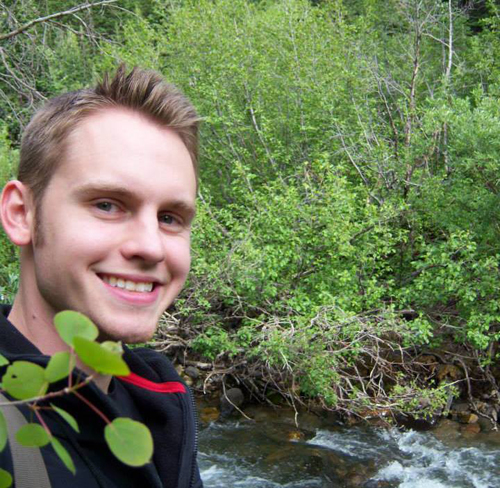
Chase Mason
2015-2016 Putnam Fellow
The research of Chase Mason is focused on the evolution of leaf physical and chemical defenses in relation to the leaf economics spectrum (LES), habit, and species’ source climate across woody genera. LES relates the initial investment of carbon during leaf development with the net carbon gain of that leaf. Chase is an associate professor at the University of Central Florida.
- De La Pascua DR, Smith‐Winterscheidt C, Dowell JA, Goolsby EW, Mason CM*. 2020. Evolutionary trade‐offs in the chemical defense of floral and fruit tissues across genus Cornus. Appl Plant Sci. 107(9):1260–73.
- Mason CM*, LaScaleia MC, De La Pascua DR, Monroe JG, Goolsby EW. 2020. Learning from dynamic traits: Seasonal shifts yield insights into ecophysiological trade-offs across scales from macroevolutionary to intraindividual. Int J Plant Sci. 181: 88-102.
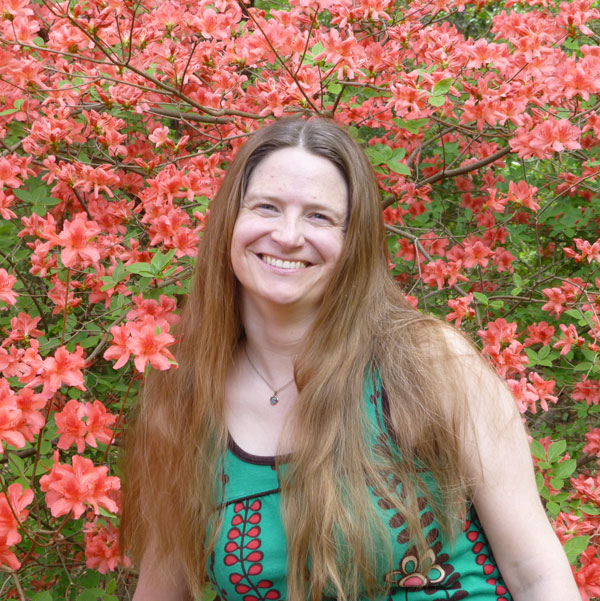
Jessica Savage
2014-2016 Putnam Fellow
Jessica Savage is interested in understanding how seasonal changes in vascular activity influence flowering and carbon allocation. Specifically she compared xylem and phloem anatomy, physiology and function in precocious flowering species (those that flower before the leaves emerge) with related species that flower later in the season. Jessica is an associate professor at the University of Minnesota, Duluth.
- Savage JA*. 2019. A temporal shift in resource allocation facilitates flowering before leaf out and spring vessel maturation in precocious species. American Journal of Botany 106(1):113–22.
- Savage JA*, Beecher SD, Clerx L, Gersony JT, Knoblauch J, Losada JM, Jensen KH, Knoblauch M, Holbrook NM. 2017. Maintenance of carbohydrate transport in tall trees. Nature Plants 3: 965-972
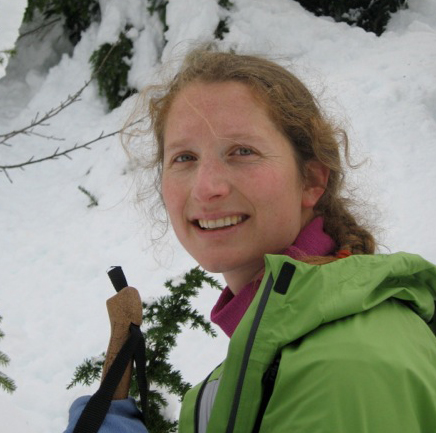
Ailene Ettinger
2014 Putnam Fellow
Ailene Ettinger focused on predicting the response and sensitivity of plants to a changing climate. By examining diverse trees growing in a common environment, she can identify functional traits that are important for success outside their historical conditions. Ailene is currently a quantitative ecologist at The Nature Conservancy.
- Wolkovich EM, Chamberlain CJ, Buonaiuto DM, Ettinger AK, Morales-Castilla I. 2022. Integrating experiments to predict interactive cue effects on spring phenology with warming. New Phytologist 235: 1719-1728. Abstract
- Ettinger AK*, Buonaiuto DM, Chamberlain CJ, Morales-Castilla I, Wolkovich EM. 2021. Spatial and temporal shifts in photoperiod with climate change. New Phytologist 230: 462-474. Abstract
- Ettinger AK*, Chamberlain CJ, Morales-Castilla I, Buonaiuto DM, Flynn DFB, Savas T, Samaha JA, Wolkovich EM. 2020. Winter temperatures predominate in spring phenological responses to warming. Nature Climate Change.
- Ettinger AK*, Gee S, Wolkovich EM. Phenological sequences: how early-season events define those that follow. American Journal of Botany. 105: 1-1010(12):1137–42.
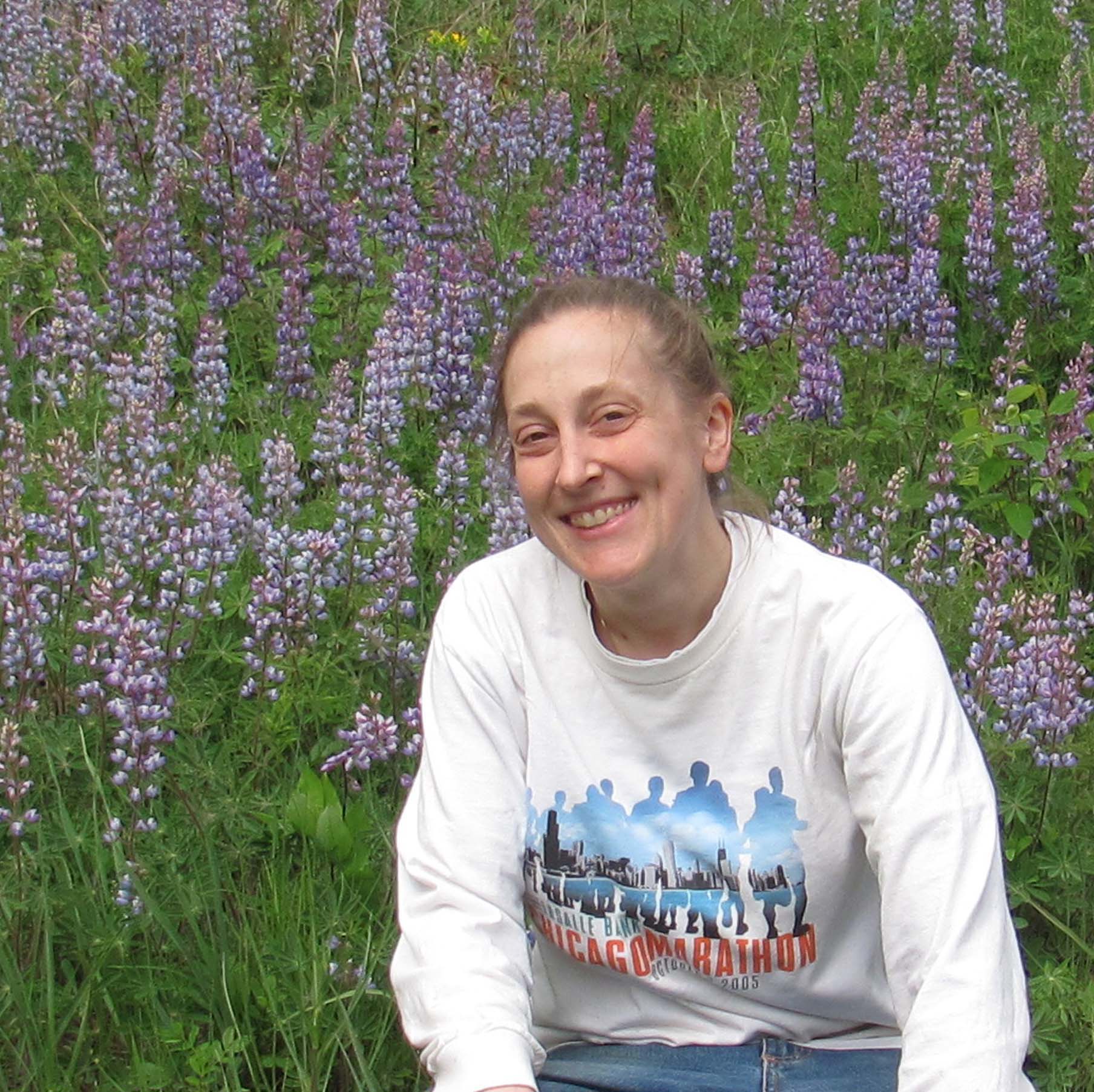
Stacey Leicht Young
2013 Putnam Fellow
The research of Stacey Leicht Young examined the ecological and reproductive strategies required for lianas (woody vines) to be successful in its environment utilizing the Arboretum’s Leventritt Shrub and Vine Garden. Stacey is a project scientist at RK&K (Rummel, Klepper & Kahl, LLP) in Baltimore, Maryland.
- Leicht-Young SA*, Healy R, Del Tredici P. 2016. Observation of mycorrhizal colonization in roots in natural populations of Celastrus orbiculatus Thunb. The Journal of the Torrey Botanical Society 143: 322-324.

Guangyou Hao
2012-2014 Putnam Fellow
Utilizing the conifer collection, Guangyou Hao studied the differences in the structural, physiological, and mechanical properties of water transport and xylem hydraulics between evergreen and deciduous conifers (which shed their leaves). Guangyou is a professor at the Institute of Applied Ecology at the Chinese Academy of Sciences.
- Hao G-Y*, Lucero ME, Sanderson SC, Zacharias EH, Holbrook NM. 2013. Polyploidy enhances the occupation of heterogeneous environments through hydraulic related trade-offs in Atriplex canescens (Chenopodiaceae). New Phytologist 197: 970–8.
- Hao G-Y*, Wang A-Y, Sack L, Goldstein G, Cao K-F. 2013. Is hemiepiphytism an adaptation to high irradiance? Testing seedling responses to light levels and drought in hemiepiphytic and non-hemiepiphytic Ficus. Physiologia Plantarum 148: 74-86.
- Hao G-Y*, Wheeler JK, Holbrook NM, Goldstein G. 2013. Investigating xylem embolism formation, refilling and water storage in tree trunks using frequency domain reflectometry. Journal of Experimental Botany 64: 2321-2332.

Cary Pirone
2011-2013 Putnam Fellow
The research interests of Cary Pirone lay primarily in understanding how chemical signals mediate biological phenomena. As a Putnam Fellow, she explored the complexities of pollination drops (ovular secretions) of several conifer species and ginkgo using biochemical and anatomical approaches. Cary is a scientist at the US Food and Drug Administration.
- Prior N, Little SA, Boyes I, Griffith P, Husby C, Pirone-Davies C*, Stevenson DW, Tomlinson PB, von Aderkas P. 2019. Complex reproductive secretions occur in all extant gymnosperm lineages: a proteomic survey of gymnosperm pollination drops. Plant Reprod. 32: 153-166.
- Nepi M, Little S, Guarnieri M, Nocentini D, Prior N, Gill J, Barry Tomlinson P, Ickert-Bond SM, Pirone C*, Pacini E, von Aderkas P. 2017. Phylogenetic and functional signals in gymnosperm ovular secretions. Annals of Botany 120: 923-936.
- Pirone-Davies C*, Prior N, Von Aderkas P, Smith D, Hardie D, Friedman WE, Mathews S. 2016. Insights from the pollination drop proteome and the ovule transcriptome of Cephalotaxus at the time of pollination drop production. Annuals of Botany 117: 973-984.
- Prior N, Little SA, Pirone C*, Gill JE, Smith D, Han J, Hardie D, O’Leary SJB, Wagner RE, Cross T, Coulter A, Borchers C, Olafson RW, and von Aderkas P. 2013. Application of proteomics to the study of pollination drops. Applications in Plant Science 1: 1300008.
Brian Morgan
2010-2011 Putnam Fellow
Brian Morgan focuses on the use of geographic information systems (GIS) technology as a management and decision-making tool for public gardens. Brian created a GIS for the Arnold Arboretum based on the ArcGIS Public Garden Data Model, and a web-based application for performing collections research. Brian is the director of the Alliance for Public Gardens GIS.
Abby Hird
2008-2010 Putnam Fellow
Conservation of threatened plant species is of great interest to Abby Hird. As a scientist for Botanic Gardens Conservation International–United States (BGCI-US), she collaborates with the Arnold Arboretum to implement the recommendations of the North American Collections Assessment. The goal is to preserve threatened taxa and increase genetic diversity by preserving wild-collected plants at the Arboretum and other botanical gardens.
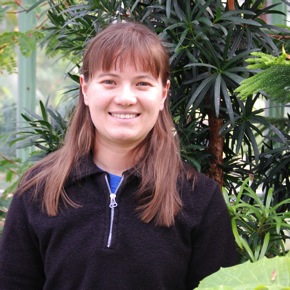
Jennifer Winther
2007-2009 Putnam Fellow
As a Putnam Fellow, Jennifer Winther established a research program on the developmental genetic mechanisms underlying male and female identity in the reproductive structures (cones) of gymnosperms. Now an assistant professor in biology at Grand Valley State University, Michigan, she continues this research with her undergraduate students.
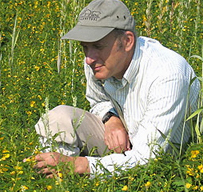
Richard Primack
2006-2007 Putnam Fellow
Richard Primack is a professor of biology at Boston University. The Putnam Fellowship enabled Richard to evaluate the effects of climate change on plants and animals at the Arnold Arboretum and Concord. It also fostered an ongoing collaboration with Harvard Professor Chuck Davis to focus on how the evolutionary relationships between species play a role in adaptation to climate changes.
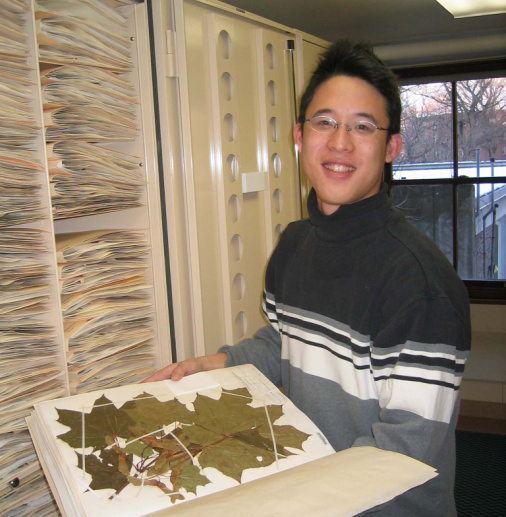
Eric Hsu
2005-2006 Putnam Fellow
Eric Hsu is currently a doctoral student studying conifers at the University of Tasmania (Australia), and his career objectives include botanic garden management and garden design and consultancy. As a Putnam Fellow, Eric investigated the Arboretum’s Acer (maple) and Stewartia collections to build a case for their designation as national collections by the American Public Garden Association.
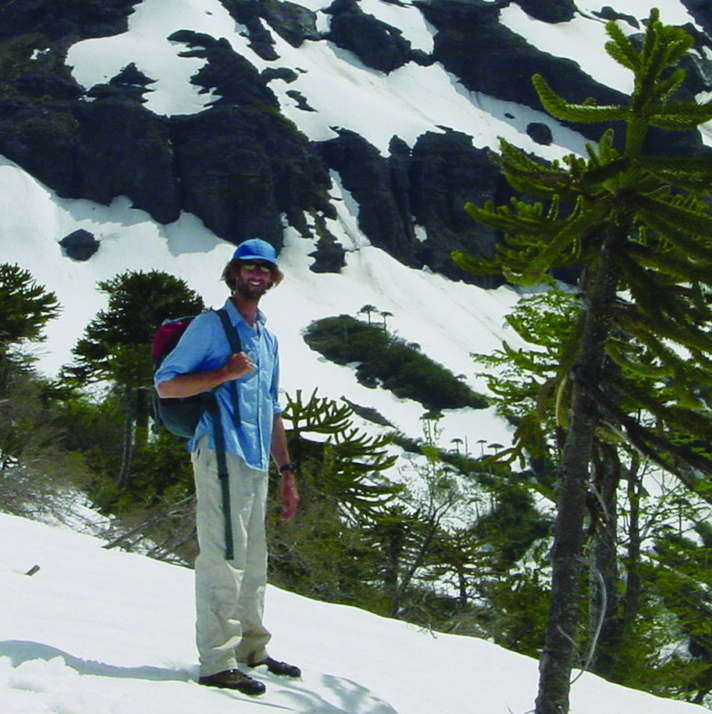
Tim Brodribb
2005 Putnam Fellow
Tim Brodribb studied the Arboretum’s extensive conifer collection for his Putnam Fellowship, comparing the evolutionary trends of leaf structure and function for Southern and Northern Hemisphere species. Currently, he is a professor at the University of Tasmania, Australia, investigating the deep time evolution of veins and photosynthesis in leaves.
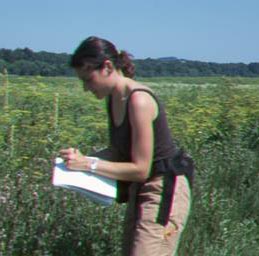
Nina Theis
2004-2005 Putnam Fellow
Nina Theis, in collaboration with Arboretum taxonomist Jianhua Li and Michael Donoghue at Yale, used molecular phylogenetics to investigate the evolution of fragrance in Lonicera (honeysuckle) and Syringa (lilac) as a Putnam Fellow. Nina continues to study the ecology of fragrance production in her current role as associate professor of biology at Elms College in Chicopee, Massachusetts.
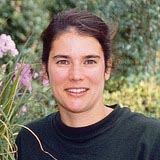
Sonia Uyterhoeven
2002-2003 Putnam Fellow
Currently, Sonia Uyterhoeven is a gardener for public education at The New York Botanical Garden. There she performs a dual role as educator and gardener in the Home Gardening Center, sharing her expertise in the areas of education, gardening, and design.
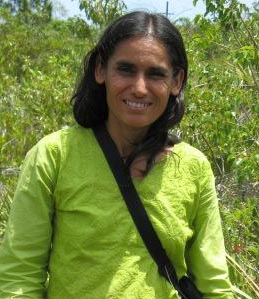
Sonali Saha
2002-2004 Putnam Fellow
As Putnam Fellow, Sonali Saha collaborated with Harvard Professor Noel Michele Holbrook in investigations of the physiological properties of bamboo species. She is currently a senior biologist at the Institute for Regional Conservation in Miami, and serves a cooperative post with Everglades National Park as a vegetation biologist. Sonali is also an adjunct professor at Touro College South in Miami, and visiting faculty member at The A.P. Leventis Ornithological Research Institute (APLORI), Nigeria.

Lawren Sack
2002-2003 Putnam Fellow
Lawren Sack studied hydraulic conductance and structure of tree leaves as a Putnam Fellow. Now he is a professor of plant physiology and ecology at UCLA, and a faculty affiliate for UCLA’s Center for Tropical Research. His research continues to focus on leaf and whole plant water transport, as well as the ecology and physiology of plant species coexistence, the evolution of diversity of leaves, forest dynamics and ecohydrology, and conservation physiology.

Youngdong Kim
2001-2002 Putnam Fellow
Youngdong Kim was awarded a Putnam Fellowship to reconstruct the phylogeny of the genus Berberis (barberry) to resolve the evolutionary relationships among its Asian and North American species. Youngdong is currently a professor of biology at Hallym University in South Korea.
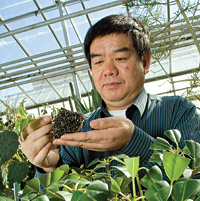
Donglin Zhang
2001 Putnam Fellow
Putnam Fellow Donglin Zhang employed morphological and genetic approaches to study the origins of tree lilacs and a new Chamaecyparis (Atlantic whitecedar) cultivar, ‘Quiana’. He is a professor of ornamental horticulture at the University of Maine. His research focuses on conservation and the utilization of germplasm of ornamental plants.

Michael Dosmann
2000-2002 Putnam Fellow
As a Putnam Fellow, Michael Dosmann studied the taxonomy of katsura trees (Cercidiphyllum), the reproductive biology of a rare monkshood, the efficacy of plant exploration efforts, and helped coordinate plant selection and sequence for the Leventritt Shrub and Vine Garden. Michael returned to the Arboretum in 2007 and is now the keeper of living collections.
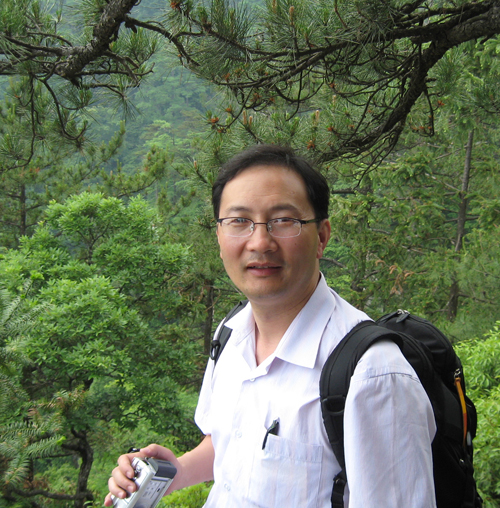
Jianhua Li
1998-1999 Putnam Fellow
As Putnam Fellow, Jianhua Li studied the phylogenetic relationships of witch hazels (Hamamelis) and studied the classification of tree lilacs (Syringa) with Arboretum propagator Jack Alexander. After his fellowship, Jianhua served a senior research scientist at the Arboretum until 2009. Currently, he is a professor of biology at Hope College in Holland, Michigan.
Keiko Satoh
1997-1998 Putnam Fellow
During her appointment as a Putnam Fellow, Keiko Satoh worked on the E. H. Wilson archival collection, particularly researching his plant introductions and their distribution by the Arboretum. Her focus on the distribution of Metasequoia (dawn redwood) culminated in an article for Arnoldia on the global travels of the plant initiated by the Arboretum in the late 1940s.
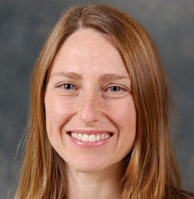
Katherine Gould Mathews
1997-1998 Putnam Fellow
Katherine Gould Mathews first worked with Arnold Arboretum scientists as a curatorial assistant at the Harvard University Herbaria. As a Fellow, she studied the phylogenetics of the eastern North American/eastern Asian disjunct genus Triosteum (Caprifoliaceae). Katherine is currently an assistant professor of biology at Western Carolina University, where her research focuses on the evolutionary history of southern Appalachian plant species.

Jinshuang Ma
1995-1996 Putnam Fellow
As Putnam Fellow, Jinshuang Ma studied the natural history and worldwide cultivation of Metasquoia glyptostroboides (dawn redwood), a species originally distributed worldwide by the Arnold Arboretum. Since 2001, Jinshuang has worked as a research taxonomist at the Brooklyn Botanic Garden. His research career has centered on conservation biology, the flora of Asia, and taxonomic advances.

Kim Tripp
1994-1996 Putnam Fellow
As a Putnam Fellow, Kim Tripp used the living collections to examine the physiology of plant adaptability and propagation in a range of exotic and native taxa, including established historic accessions, newly collected specimens, and rarely cultivated species. After serving as director at the New York Botanical Garden, she turned to a new career in osteopathic medicine at the University of New England in Biddeford, Maine.
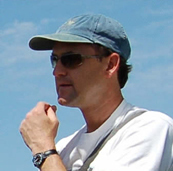
David Ackerly
1994 Putnam Fellow
David Ackerly initiated his postdoctoral work on the evolution of the genus Acer (maple). As a professor at the University of California, Berkeley, David is still utilizing data he collected during his Putnam Fellowship and including the maples in new studies on the evolution of woody plants. His research focuses on trait-based community ecology, niche and trait evolution, and climate change.

Jun Wen
1991-1992 Putnam Fellow
As a Putnam Fellow, Jun Wen utilized cutting-edge analyses and newly developed molecular tools to examine the biogeographic distribution of plants in eastern Asia and eastern North America. As a research scientist and curator at the Smithsonian Institution, her research program has successfully incorporated classical field explorations, modern DNA molecular tools, and advanced theories of phylogenetics and biogeography.

Michael Dirr
1991 Putnam Fellow
Michael Dirr came to the Arboretum as a Putnam Fellow during a sabbatical from his work as a faculty member of the University of Georgia. Of the Fellowship, Michael states that it “was a springboard to the worldwide panoply of woody plants. I spent my days in the remarkable living collection, a herbarium that blankets the world, and a library where a researcher’s queries are always answered. What more could a plantsman ask?”

Richard Schulhof
1989-1990 Putnam Fellow
As a Fellow, Richard Schulhof developed the first comprehensive plan for the Arboretum collections and landscape, and was hired thereafter as the Arboretum’s director of public programs. After serving as director of Descanso Gardens in his native Southern California, Richard was lured back to the Arboretum as the deputy director. Currently, he is the chief executive officer at Los Angeles County Arboretum and Botanic Garden.
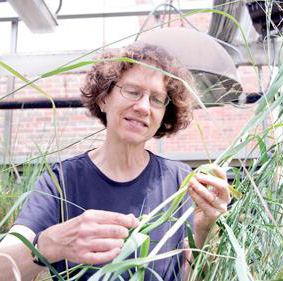
Elizabeth Kellogg
1989-1990 Putnam Fellow
The Putnam Fellowship gave Elizabeth Kellogg the opportunity to learn and apply new genetic techniques to solve contemporary research questions. Currently, she is the E. Desmond Lee Professor of Botanical Studies at the University of Missouri-St. Louis. Her research includes explorations of the molecular machinery that control plant shape and structure and investigations of plant morphology and variation exhibited by closely related plants.
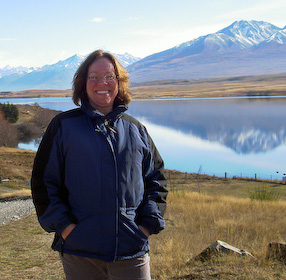
Jessica Gurevitch
1989 Putnam Fellow
To relate the complexity of leaf shape to ecological and evolutionary factors, Jessica Gurevitch, professor and chair of the Department of Ecology and Evolution at Stony Brook University, collected and analyzed a large number of maple leaves from the Arboretum’s living collections. The Putnam Fellowship gave her the freedom to explore new research directions toward statistical applications in plant population and community ecology.
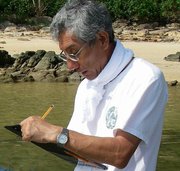
Tokushiro Takaso
1988-1990 Putnam Fellow
Tokushiro Takaso utilized the Arboretum’s vast collection of conifers to study pollination mechanisms as a Putnam Fellow. He is currently at the Research Institute for Humanity and Nature in Okinawa, Japan. There, he leads a project aimed at understanding the interactions between the natural environment and human social systems in subtropical islands.
